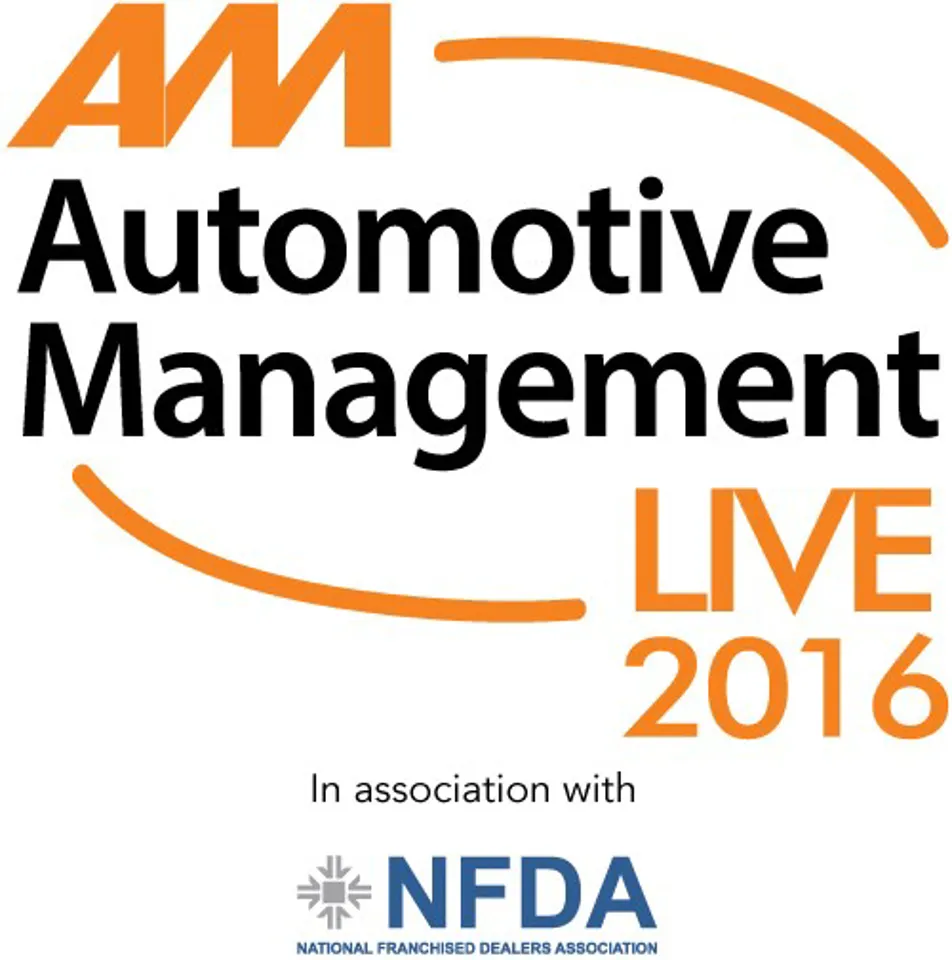Video - presented by CitNow
While video was described as one of the most important innovations in dealerships, dealer bosses urged caution in the way it is introduced to staff and shared with customers.
CitNOW chief executive Alistair Horsburgh invited bosses from Group 1 Automotive and Jardine Motors Group to share their experiences of video use in showrooms and workshops.
Darren Guiver, Group 1’s deputy group managing director, warned against the use of video without alerting the customer first.
“Video is an innovation, but if it arrives in an inbox unsolicited a customer could worry that it forewarns them of the need to spend money on getting their car fixed,” he said.
“So, at the point of booking the service, for example, or dropping the car off at the dealership, tell the customer they will receive a video via email or text – and then make sure you fulfil that promise.”
Jason Cranswick, Jardine’s operations director, agreed on the need to ensure appropriate business processes were in place, but said it went much further than the use of video.
“Simultaneous to introducing video, we re-established all of our sales and service core processes. We’ve given all of our team members a new operating framework – allowing for some latitude with video since it’s not a one-size-fits- all tool.”
“Dealers are challenged with building our own technological eco-system, of which video is a part, alongside the dealer management system and Live Chat and it only exists if our team members have the confidence, skills and behaviours to support it.
“The technology used by people doing great things is what will make the difference.”
Both Cranswick and Guiver emphasised the importance of taking a sensitive approach to introducing video to the business.
“We did a roadshow of our dealerships, allowing staff to try it, adding humour to it and then video use grew organically as it became recognised as a trust builder for customers. There is no financial incentive attached to video use – colleagues now want to make videos,” said Cranwick.
Guiver said: “Video is the new normal and the correlation between video open rates and improved customer satisfaction and profit levels speaks volumes.”
New cars - presented by Supagard
Advances in the way motorists buy finance and other add-ons mean “the power now lies with them” – putting greater demands on dealers to forge relationships.
Mike White, commercial development manager at Mapfre, told visitors to his ‘Maximising showroom profitability’ presentation at Automotive Management Live that car retailers must place greater emphasis on selling opportunities outside the dealership.
Early contact, as many customers are now starting their buying journey with online research, and a more targeted focus on follow-up calls, are musts.
White described research suggesting that 41% of online enquiries to car retailers went unanswered as “alarming”. He said as much as possible should be done to attract customers online and engage with them as early as possible.
Finance offers must be placed front and centre on any dealer website, he said, and efforts should be made to ensure retailers are given a head-start by data gathering ahead of any visit to the showroom.
White said many top AM100 retailers now have finance calculators on their websites and can gather customer data to ensure that those predetermined criteria are accessible at the dealership.
White said: “You don’t have to wait until you are sitting down face-to-face, ready to do the deal, to speak to them about their financing options.
“What we need to understand is that the customer can do all their research at home now, or even on the move. The power now lies with them.”
Taking this a step further, White suggested that video could be used to guide customers through their finance options as they grab a cup of coffee in the customer lounge once inside the dealership.
He said: “The dealer has to ensure customers receive good service and get all the information they need about the products on offer.”
Equally, he highlighted the need to contact customers after their visit – by email, social media or SMS – to provide additional information on relevant finance, GAP insurance or extended warranty products.
White said: “The deferred sale or just a call to deliver some TLC, they are all contact points where a dealer can ask about the car and discuss the customers’ buying decisions.”
Online finance - presented by iVendi
Dealers should be prepared for online retailing, which is just ‘weeks away’, and offering choice is the key to capitalising on it, according to James Tew, chief executive of iVendi.
He told delegates that three quarters (74%) of new car buyers already know how they will finance their next car before going to the dealership, and 71% start the process online.
More importantly, 71% also like to use comparison sites. Therefore, Tew believes dealers should offer a range of prices through different finance providers.
“You have to give choice – give prices from other suppliers. Keep your lead price, but show the buyer that they are getting a good deal. If you don’t give them choice, they will just look elsewhere,” Tew explained.
Selling cars should no longer be about the screen price, he said, as current research showed about 43% of buyers would like to search by monthly payment instead.
He added: “I think the percentage is a lot higher than 43% because I search on payment for everything in my life – everything I look at is a monthly cost. Payment search is front and centre of the consumer experience.”
To support this trend, iVendi has launched Car Finance Checker, an online service that can be embedded in a dealer’s website to pre-approve visitors while they are still in the research phase of their buying cycle.
Offering GAP insurance and other add-ons should also be considered at this point rather than the customer looking for it elsewhere.
“It’s too late in the process to give this to customers in the showroom, they may have already decided,” said Tew.
According to Auto Trader, only 7% of consumers trust used car dealers and Tew believes it is all down to offering choice.
“If transparency engenders trust, and trust is what we’re after, then we need to engender more transparency in the process,” he said.
Social media - presented by Marketing Delivery
Facebook is an untapped resource for dealers to significantly expand their online presence, but too many fail to exploit its opportunities.
As Google has matured as a marketing channel, and become overcrowded and more expensive, Facebook is providing a number of practical opportunities to boost customer reach, said Jeremy Evans, Marketing Delivery’s managing director.
Data-driven Facebook advertising is available with an average cost per click of 20p, 80% cheaper than Google AdWords, he said.
There are 50 million business pages on Facebook and Evans suggested the following to make them stand out: Use localised pages for each dealership (“customers don’t visit your head office”), post news of local events, breaking news about your brands, handover pictures – all with images. Manage your reputation through reviews, replying to both good and bad.
However, Marketing Delivery believes 40% of Facebook’s users don’t ‘like’ brand pages. The alternative way to reach them is via Facebook advertising – but only 10% of dealers are using this in their social media marketing campaigns.
Where they are using it, the results are positive: in September and October, Marketing Delivery clients using Facebook advertising found that up to 60% of their total new vehicle display page referrals came from the social network’s advertising, more than Google and Auto Trader.
There are several elements to Facebook advertising – users can access ratings and reviews on the platform and these now show up on the Google results page.
A Facebook remarketing pixel can sit on a dealer’s website and it will match a user’s details – via an email address - to its own profiles, if the user is logged into Facebook.
In a similar way, contacts from a dealer’s DMS can be uploaded to Facebook with customers matched to existing Facebook profiles.
Facebook will then serve the dealer’s ads on the site to these same people.
Google Analytics data can be used to see which users made enquiries and requested a call back, and dealers can use relevant Facebook ads to re-engage with them.
The pixel data can be used to target existing customers as well as a ‘lookalike audience’, where Facebook analyses characteristics of a large enough sample of users to create an expanded audience with similar demographics, interests and accounts.
Finally, Marketing Delivery’s ‘micro-audience’ targeting uses additional data from its eCRM system’s customer records to narrow down to a group of customers who have not purchased. They can be served ads about vehicles in stock or service reminders, for example, with the ads clicking through to booking pages or a Messenger function. Once they have transacted or made a booking, they will be removed from the targeted audience.
“This is data-driven marketing at every step of the digital marketing process and this is the next step from email and text messages to put you in front of customers via the technology they want to use,” said Evans.
Websites and digital - presented by GForces
The used car section of a dealer’s website is the most popular with users, but have they been designed to maximise the number of conversions (the completion of an online contact form)?
Paul Hilton, GForces’ retail sales director, used insight from traffic to dealers’ sites built by the company, which amounts to 90 million visits and more than 88m sessions for the 10 months to the end of October 2016. Of these, 57% were to used car pages. There were more than 76m used vehicle searches, equating to 200m page views.
With this volume of traffic, dealers need to ensure site layout and content are optimised to exploit the interest. He suggested a simple test to find some basic information: “How hard is it to find your dealership’s postcode? In one case, it took me four to five clicks and in another I resorted to Google to search for it.”
He gave a number of best practice tips: Don’t make the search experience too basic, but provide filters from the outset – when refining a search, 63% of users are looking for automatic cars and another 64% define diesel as their fuel choice. Also, ‘estate’ is the most filtered body style and favourite colour is black or white. Make it easy for users to specify their preferences from the outset, said Hilton: “Provide a drop-down that says ‘show me all diesels’ or ‘show me all automatics’”.
If you know you will always have certain brands’ cars in stock, make it easy to find them with a ‘filter by make’.
Hilton laid out the elements of the ideal vehicle detail pages, where typically 75% of all consumer enquiries to a dealer come from.
Hilton used the Croyland used car supermarket’s website (www.croylandcarmegastore.co.uk) as his best practice example.
Its vehicle pages have high-quality images, price, location, reviews, part-exchange pricing, finance calculator and four calls to action, all generating contact with the dealership, not ‘share with a friend’ or ‘print specification sheet’.
On mobile, he said, you can make seeing multiple images a clickable option, “freeing up real estate to display a prominent call to action”.
“It sounds so simple, but I could bring up 100 websites that have critical calls to action at the bottom of the page in a bland colour with the wrong terminology used,” Hilton said. “Let’s build sites based on what is going to have the best impact on conversion rates.”
Auctions and appraisals - presented by Cooper Solutions
Dealers must prepare to move away from paper-based processes as consumers are increasingly demanding a more transparent digital service, Simon Whicher, product head at Cooper Solutions, told delegates.
The session examined the customer experience, illustrating how a digital process such as a vehicle appraisal can lift a customer’s perceptions as well as providing a highly efficient and credible valuation method and help with FCA compliance.
“Look at your business – is what you are doing going to deliver the step change you want?” Whicher asked . “Change is definitely coming,” he added.
David Abel, business development manager, told delegates: “Customers expect an experience and most of all they want excellent service. So why are we still using paper? This is their pride and joy, possibly their most expensive asset – treat it with the respect it deserves.”
“Paper-based appraisals have served their purpose but, like a lot of things, they need changing and updating. The simplicity of taking digital images and using e-signatures at key stages in the sales process helps firm up the duty of care with the customer,” said Whicher.
He also described to delegates how a digital appraisal can generate the listing for that car to be sold on through Cooper Solutions’ auction service, speeding up the time from that vehicle arriving on site and being re-sold.
“Avoiding duplication when entering information and eliminating chances that paperwork could be mislaid creates a more professional and engaging process with customers when they arrive on site and their part-exchange vehicle is appraised.
“The use of technology makes for a slicker and more efficient operation, which is easy to track and measure,” said Whicher.
According to Cooper Solutions, transaction costs for online auctions can be nine times less than physical auctions. Meanwhile, vehicles that are more accurately appraised benefit from an average uplift of £125 per unit.
Aftersales - presented by eDynamix
Customer loyalty can be improved by streamlining aftersales processes and adopting new mobile app technology, according to eDynamix.
Nick Horton, managing director of Profit Box, eDynamix’s training partner, told delegates how over-complex aftersales systems can dampen employee enthusiasm and harm sales.
“Service advisers will usually have anything from three to six different systems and applications open in order to undertake their daily tasks, such as checking online bookings, obtaining service plan information and emailing video footage to customers.
“It makes working life overly complex, especially if these systems are not integrated. The consumer expects you to have all their information at your fingertips.
“As well as having to navigate between systems to provide the service level customers expect, the more applications a service adviser is using, the higher chance of process breakdown.”
During the seminar, delegates were asked how many systems they use outside of their DMS. Some were using up to 10 additional systems.
Horton went on to tell delegates about the importance of having a strong online presence.
“Customers want to feel connected,” he said.
Not only do apps allow dealers to monitor sales performance away from the showroom, but an upcoming app from eDynamix has been designed for the customer to use.
“Customers need to be connected to us. By using an app, we can send them reminders of maintenance work and allow them to book service and MOTs online,” said Horton.
eDynamix research has shown that average transaction values are 35% higher when customers are given the option to book online.
“The app also allows us to send a push notification to the customer asking for the vehicle mileage, this can be immediately updated on the system, along with changes to their contact details, meaning you are fully in control of that customer.”
Customer reviews - presented by JudgeService
Customer reviews on your website are not a ‘nice-to-have’ element , Neil Addley, managing director of Judge Service, told dealers at his masterclass – they should be considered an essential part of your business.
He supported the assertion in Auto Trader research findings that 30% of car buyers look for reviews of a dealer when buying a car, with more than 50% reading them as part of the buying process.
“With used car sales of 7.2 million in a year, this equates to 2.1m buyers wanting to see reviews of your business,” said Addley.
Citing Judge Service’s own findings, he said: “By using reviews, dwell time on your website can increase by about 10% and 88% of car buyers trust online reviews as much as they do comments made by people they know.”
It was also important to remember that most people will be looking at a dealer’s website when the business is shut – between 7pm and 9pm – and so “the only way of telling them how good you are is if other people have done that for you”.
Addley also stressed how reviews could “re-ignite” lost sales.
“About 40% of consumers who have been written off by sales staff as being mere tyre-kickers are actually still in the market to buy,” said Addley.
“When we asked these customers what the reality was, half of them were actually either waiting for information from the dealer or for someone to call them back. So, use reviews to sharpen your business practices and ensure this incremental business gets added to your bottom line and not a competitor’s.”















Login to comment
Comments
No comments have been made yet.